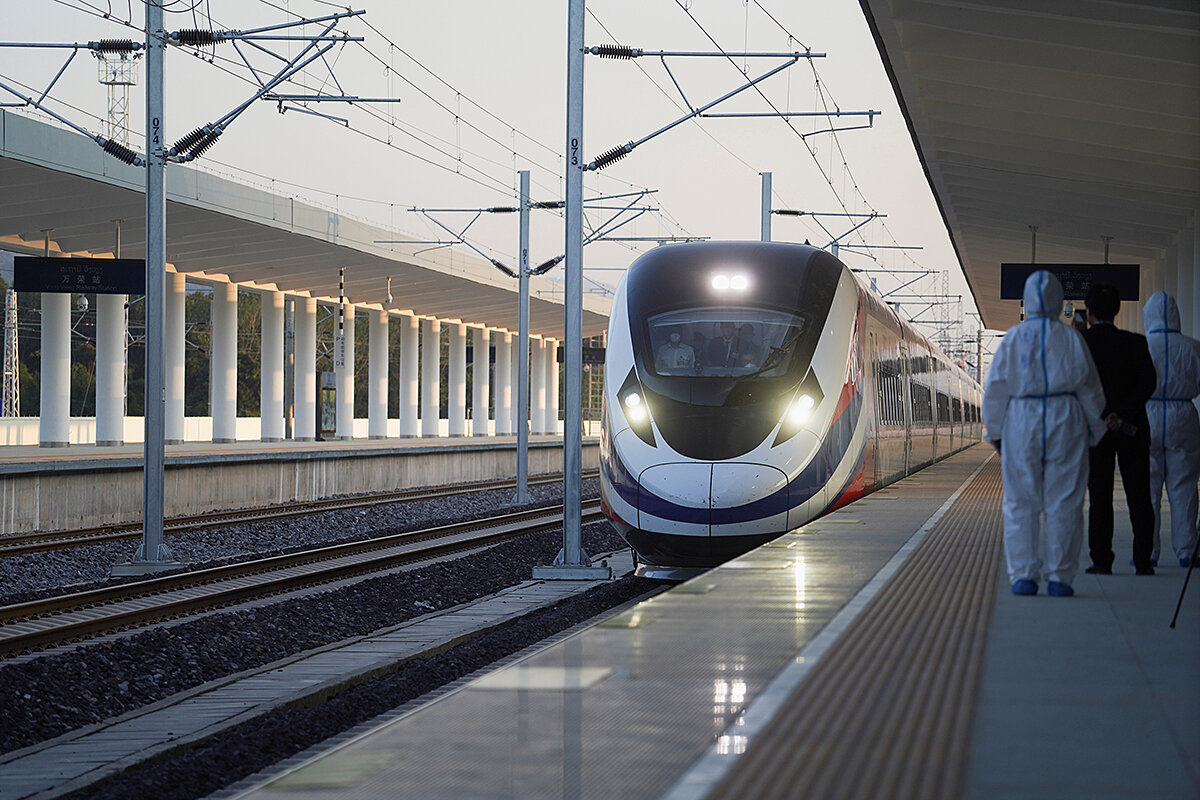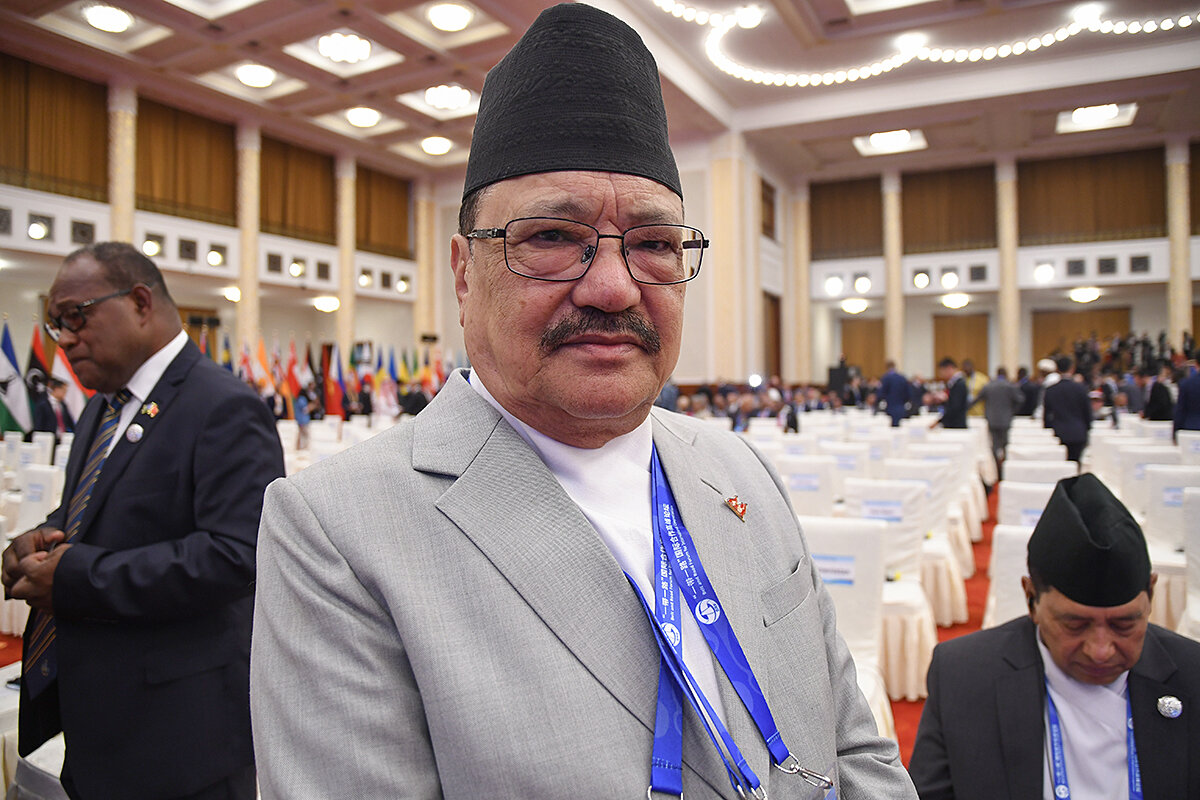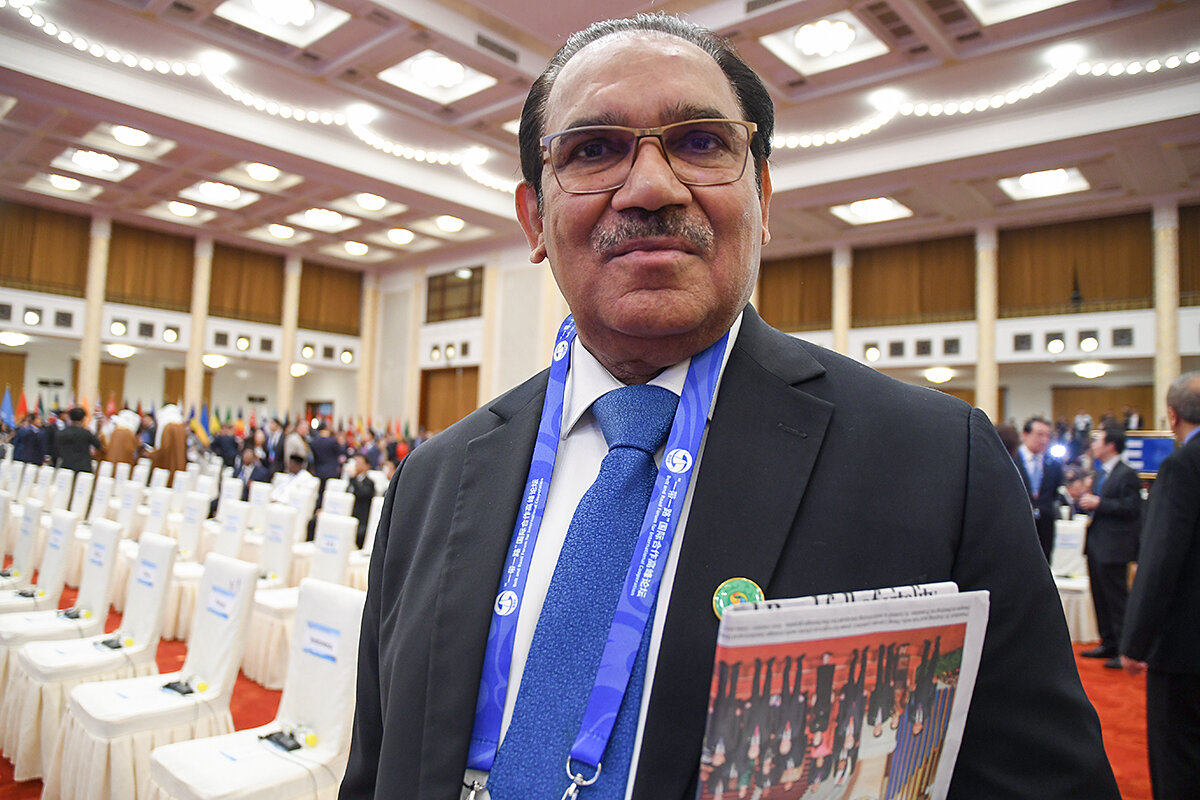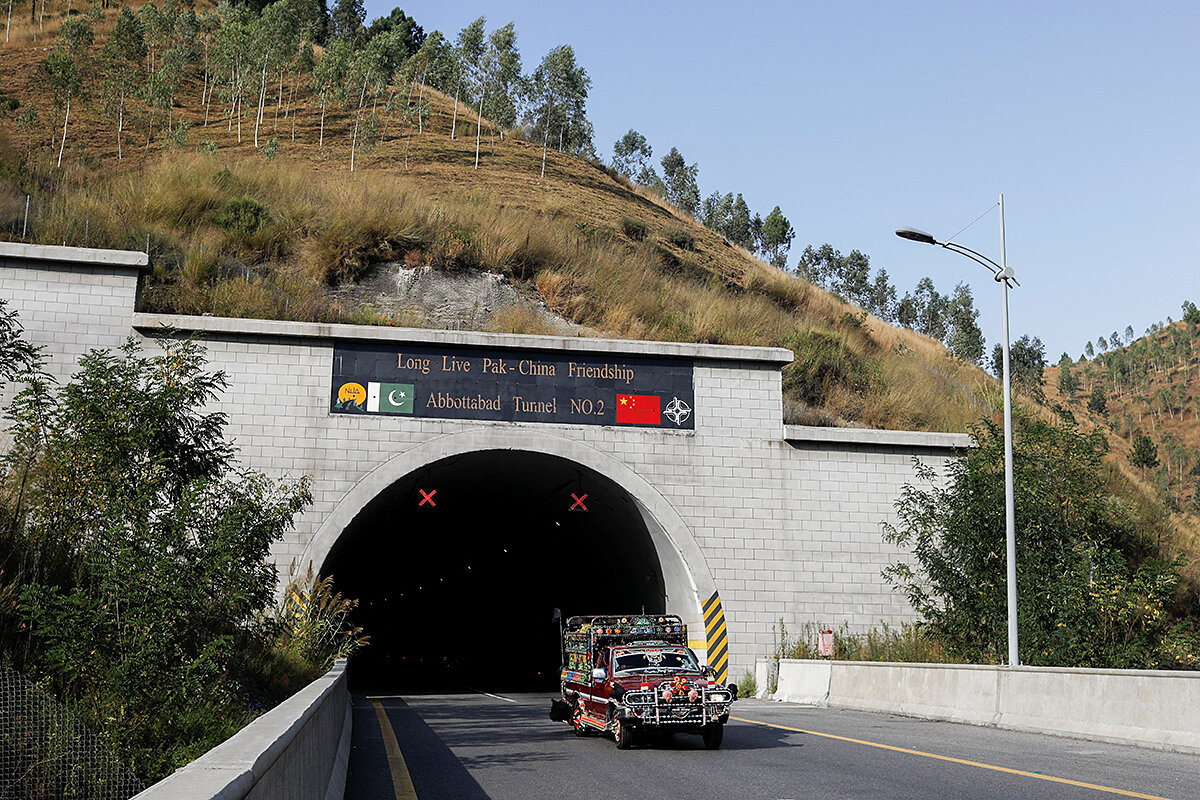China’s Belt and Road Initiative: What’s working and what’s not
Loading...
| Beijing
Chinese leader Xi Jinping this week launched a new phase of China’s massive global infrastructure and development program, the Belt and Road Initiative (BRI), aimed at strengthening the country’s economic integration and influence with the rest of the world.
With an estimated $1 trillion in investments over the past 10 years, the initiative has focused heavily on big projects by Chinese state-owned firms to construct a network of railways, roads, ports, power grids, and pipelines across Asia, Europe, Africa, and Latin America. Going forward, the initiative will shift to smaller, greener, and digital projects by commercial firms, a pivot that Mr. Xi called “a new stage of higher-quality and higher-level development.”
Speaking on a vast stage at the Belt and Road Forum before dozens of world leaders assembled in Beijing‚Äôs Great Hall of the People on Wednesday, Mr. Xi called for building ‚Äúa new platform for international economic cooperation‚Äù among the more than 150 nations that have signed BRI agreements with China.¬Ý
Why We Wrote This
Ten years ago, China launched a massive global infrastructure push, establishing an alternative to Western development models. As the Belt and Road Initiative enters a “new stage,” has it delivered on its promises of mutual prosperity?
“China can only do well when the world is doing well. When China does well, the world will get even better,” he said, adding that China is a main trading partner with more than 140 countries.
Mr. Xi first announced plans to build new intercontinental land and maritime linkages in 2013, describing them as the revival of ancient Silk Road trade routes. The initiative has won support from many countries since. It is especially popular in the Global South, where billions still lack basic infrastructure systems for drinking water, electricity, roads, schools, and internet. Now entering its second decade, the initiative also faces serious challenges, including rising debt among participating countries, China’s own groggy economy, and, recently, signs of regional competition. But after this week’s celebratory summit, analysts say the initiative is moving forward, as is China’s ability to shape the global development agenda.
The BRI was “very much based on China’s experience of infrastructure-led growth,” says Christoph Nedopil Wang, director of the Griffith Asia Institute and a professor at Griffith University in Australia. Basically, if you build a road, prosperity will follow.
‚ÄúThis is a strong view of the Belt and Road Initiative, to really copy China‚Äôs model internationally,‚Äù and to establish the initiative as a China-led alternative to Western development models, he says. Although China is adjusting that strategy in the initiative‚Äôs new phase, Dr. Nedopil Wang considers the first decade an overall success.¬Ý
“The BRI has increased China’s credibility to deliver projects,” in part by branding much of China’s overseas economic engagement with the BRI label, he says.
Weighing the debt burden
The world will face a $15 trillion gap between projected and needed global infrastructure by 2040, according to the Global Infrastructure Hub.
“Together, with the contributions of the Belt and Road Initiative, we can turn the infrastructure emergency into an infrastructure opportunity” and “supercharge the implementation of the [United Nations] sustainable development goals,” U.N. Secretary-General António Guterres told the Beijing forum on Wednesday.
Indeed, many countries remain eager for China’s help in fast-tracking development.
As he waits to hear Mr. Xi’s speech, Nepal’s ambassador to China, Bishnu Pukar Shrestha, says his country wants Beijing to help build a railway between Shigatse, Tibet, and Kathmandu. “We need big projects; we need connectivity,” he says. “It’s not more than 100 kilometers [62 miles] on the Nepal side, so they can do this; they can grant us,” he says.
But initiative infrastructure projects have also relied on debt financing, adding to the debt burden of developing nations, as China has emerged as the world’s biggest bilateral creditor to low- and middle-income nations. Mr. Guterres stressed the need for “actions right now to promote effective debt relief mechanisms.”
Over the past 10 years, some of the countries that received large amounts of finance and investment from China under the initiative include Pakistan, Indonesia, Laos, Malaysia, Bangladesh, Saudi Arabia, and Nigeria.¬Ý
In Pakistan, which has received some $52 billion in construction and investment, the China-Pakistan Economic Corridor (CPEC) has built several major highways covering about 500 miles and also prioritized hydropower and coal-fired power plants.
“When this initiative was launched, we were facing severe electricity shortages” and problems with connectivity, says Zafar Uddin Mahmood, the special envoy for CPEC in Beijing from 2014 to 2017. In three years, BRI projects produced nearly 8,000 megawatts of electricity, or 33% of the country’s total energy requirements, he says. “We were able to overcome the shortage of electricity in this short period of time,” says Mr. Mahmood, an assistant to Pakistan’s prime minister on the BRI from 2022 to 2023.
The large projects added significantly to Pakistan’s debt problem. “We are a heavily indebted country; we have more than $100 billion, and the Chinese are a major part of that, but ... not the entire part,” he says.
“When you compare [the debt burden] with the benefits, we don’t have any major issues,” he says. Chinese interest rates are on average below 3%, he says, and China has been “very generous in rescheduling the debts when we were unable to pay.”
Pakistan is not alone. In Laos, China built a $5.9 billion railway connecting the two countries that opened in December 2021, helping create jobs, fuel trade, and link the landlocked nation of 7 million people to global supply chains. The project is the first leg of China’s ambitious plan to expand its rail network through Laos, Thailand, and Malaysia to Singapore. But the project has also worsened Laos’ debt burden – in turn, creating problems for Beijing, experts say.
‚ÄúIf anything, BRI becomes a debt trap for China,‚Äù says Zongyuan Zoe Liu, a fellow at the Council on Foreign Relations and author of ‚ÄúSovereign Funds: How the Communist Party of China Finances Its Global Ambitions.‚Äù¬Ý
“It’s a problem when foreign sovereigns can no longer pay,” Dr. Liu adds. “It’s a lose-lose situation. ... China on one hand suffers from reputational damage, and delayed payment is the best-case scenario.”
China corrects course
China has begun joining with other foreign creditors to negotiate debt relief – such as for Zambia this summer – although Dr. Liu says Beijing prefers to extend the period of repayment rather than engage in debt forgiveness, the latter being known as a “haircut.”
Besides adding to debt issues, BRI projects have sparked criticism for having a lack of transparency, contributing to environmental problems, and employing Chinese goods and workers rather than local ones.
On Wednesday, Indonesian President Joko Widodo told the forum that initiative projects should stress giving countries “a sense of ownership,” rely on local employment and products, and “must not complicate their fiscal conditions.”
Italy, the only Western European country to have joined the BRI, has indicated it may not renew its participation when its five-year BRI memorandum of understanding with China expires in March next year.
“Trade-wise, it was a disaster for Italy. We didn’t get anything out of it,” says Alessia Amighini, co-head of the Asia Center and a senior associate research fellow at the Italian Institute for International Political Studies. Italy’s trade deficit with China grew from $20 billion in 2019 to $48 billion in 2022, she says.
“BRI is very effective for China’s connectivity with the rest of the world, but it’s not a win-win game,” says Dr. Amighini, an associate professor of economics at the University of Piemonte Orientale.
Beijing‚Äôs recalibration of the initiative is in part a response to such concerns, experts say.¬Ý
In contrast with big infrastructure projects loaded with debt, the next phase will emphasize smaller-scale business investment with profit potential. Focus areas will include digital connectivity and the transition to renewable energy, an industry where China enjoys a competitive advantage.
China’s overall BRI investments and construction have declined since a peak in 2018, and the average deal size has fallen by nearly half. It has boosted green energy investment in areas such as solar, wind, and hydropower. Yet China also continues work on new coal-fired power plants overseas, despite a pledge not to do so, according to Dr. Nedopil Wang, the Griffith Asia Institute director.
“The original BRI relied very much on this debt financing and using Chinese infrastructure firms to build out public infrastructure,” says Dr. Nedopil Wang. China has realized that “roads don’t generate any revenue, particularly in developing countries,” he says, so it is moving toward “commercially viable projects.”
This week‚Äôs forum, which attracted about 10,000 officials, executives, and journalists, included a CEO conference in which some 300 Chinese and foreign business executives signed cooperation contracts worth $97 billion. Ben Okoye, executive vice chair of Brass Fertilizer & Petrochemical of Lagos, Nigeria, holds a freshly signed contract in a shiny red folder for a project connected to a new methanol plant.¬Ý
‚ÄúThis is the first [BRI] contract for our company,‚Äù he says, but it plans to bid for more.¬Ý









